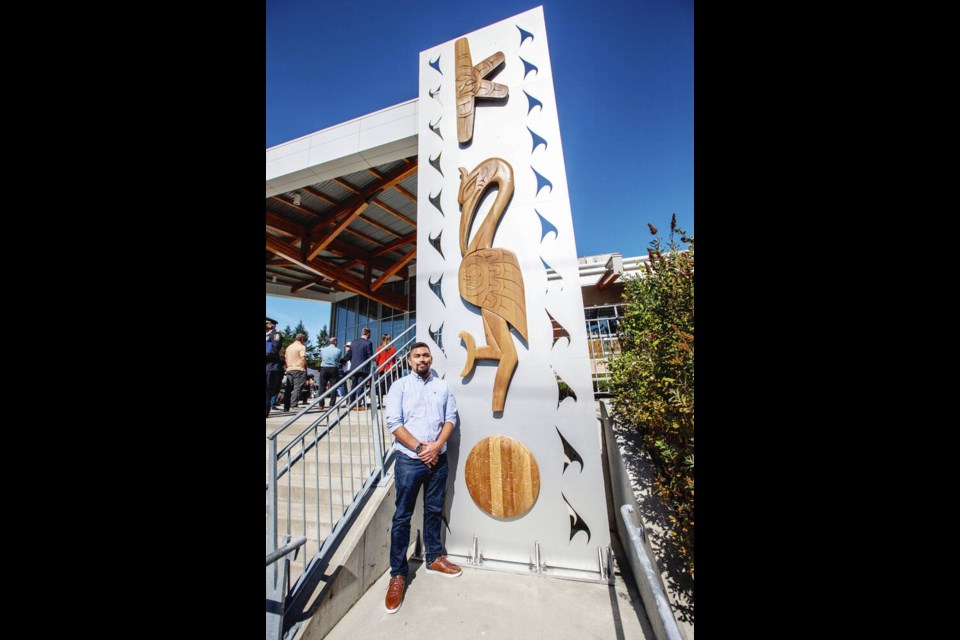Camosun College celebrated its 50th anniversary Thursday with the unveiling of a house post created by a graduate and W̱SÁNEĆ artist, intended to reflect the college’s commitment to its relationships with Indigenous communities.
The 5.5-metre, 1,100-kilogram house post designed by Bear Horne from Tsawout First Nation depicts a sun, heron and salmon carved in red cedar, all set against an aluminum background with wave-shaped cutouts representing the ocean and river.
Called the Cycle of Knowledge, the piece represents the transfer of knowledge between students, faculty and staff, with students taking what they learn at the college back to share with their communities, Horne said.
“Eventually all of that will make its return back to Camosun at some point. Maybe it’s the students’ children returning to Camosun, or the students themselves returning as instructors,” Horne said.
A W̱SÁNEĆ artist who has been carving for 25 years, Horne said he wanted to combine traditional carving work with modern materials to create a piece inspired by his time studying at Camosun.
“I met a lot of really great people here and made a lot of connections, and it set me up for a lot of good things in my life,” said Horne, a graduate of Camosun’s Indigenous college prep program.
In W̱SÁNEĆ culture, a house post represents strength and would traditionally hold up longhouses, Horne said.
The house post unveiling outside the college’s Centre for Trades Education and Innovation marked 50 years since the college opened on Sept. 16, 1971. In the fall of that year, the college welcomed 980 students. Camosun’s two campuses now see about 16,000 students enrolled annually in 160 programs.
President Sherri Bell said the house post will welcome students and staff to the campus, and reflects the college’s ongoing commitment to building relationships with Indigenous communities.
The college’s name comes from the Lekwungen language, meaning “where different waters meet and are transformed.”



